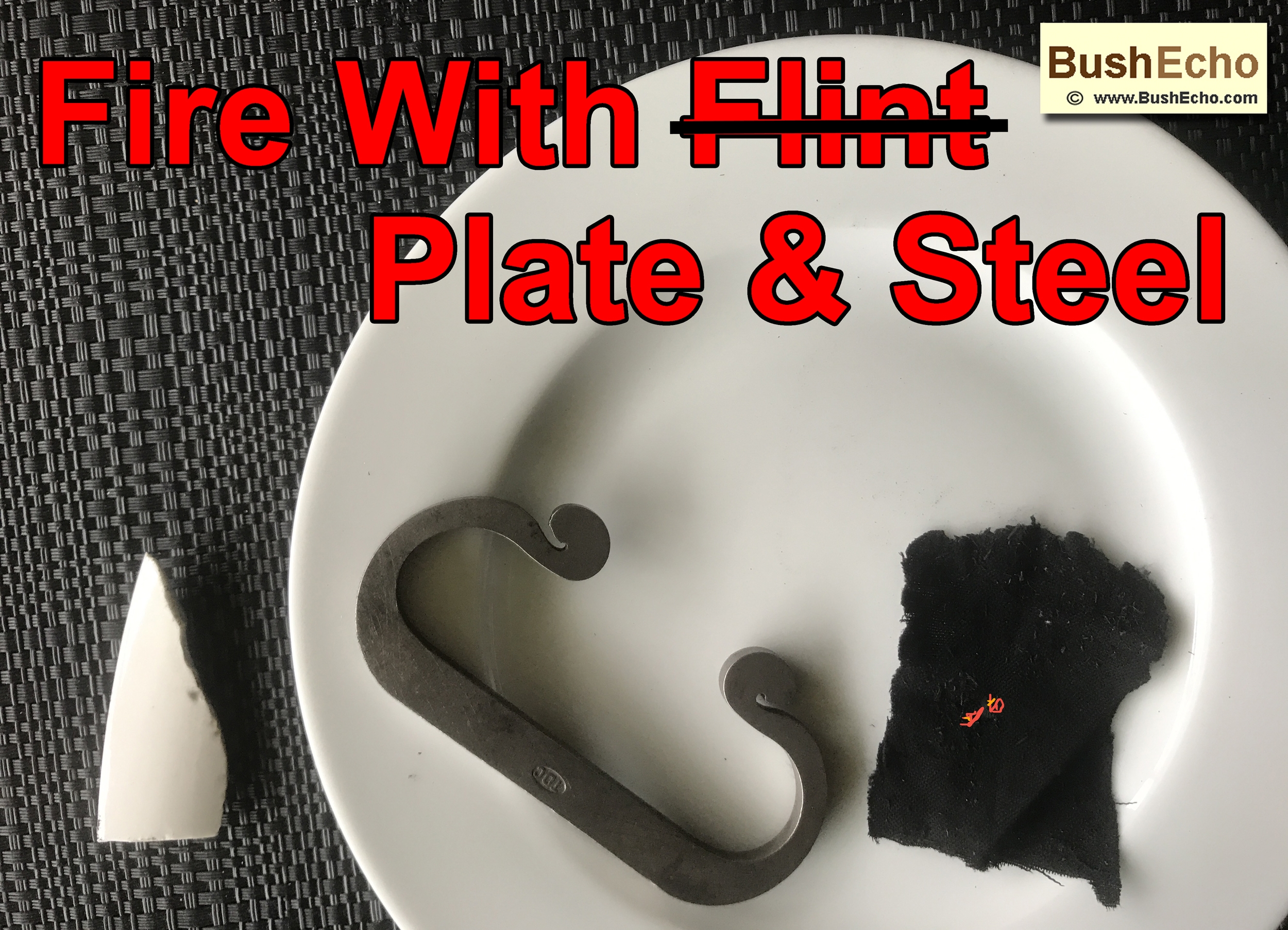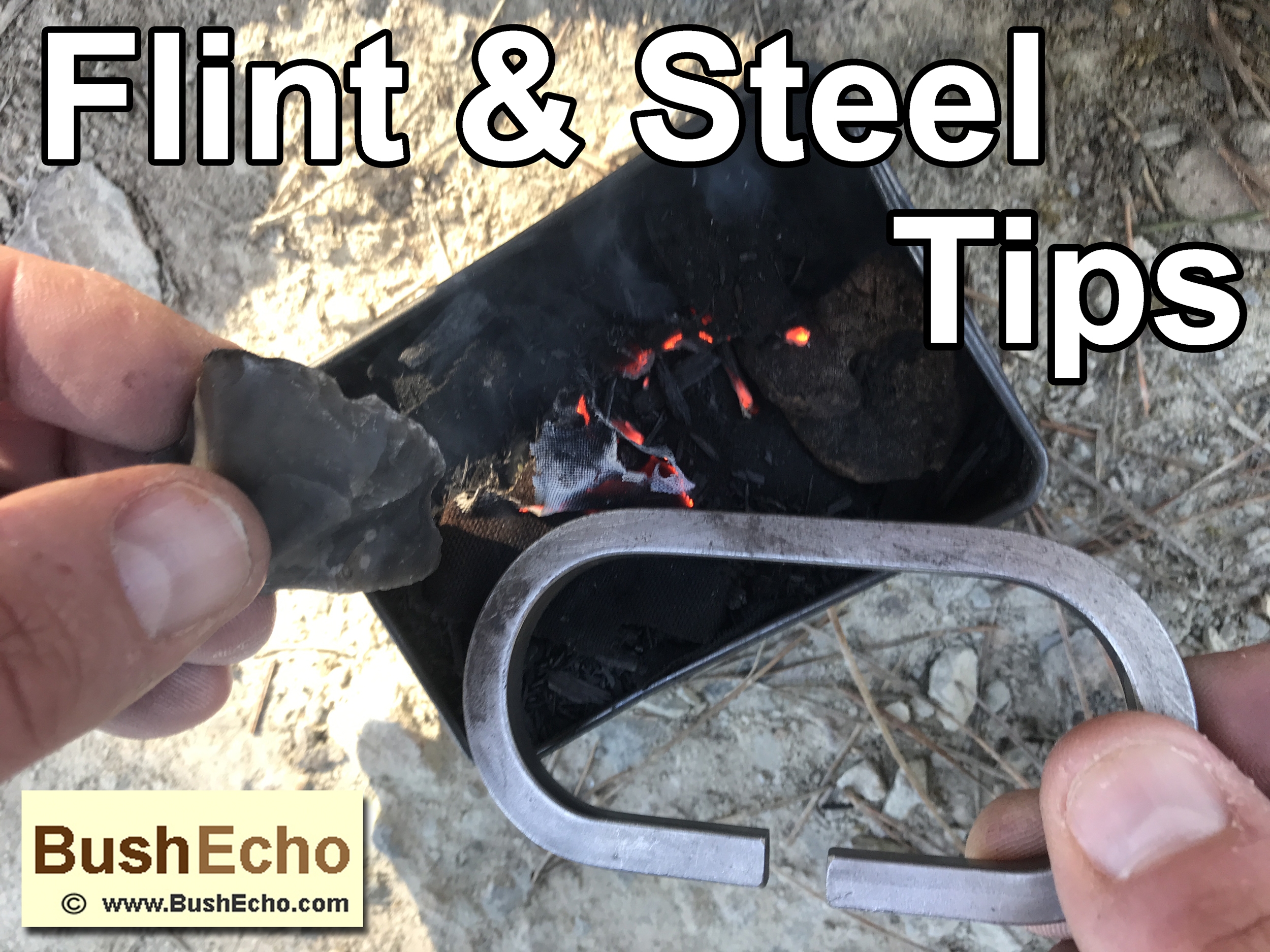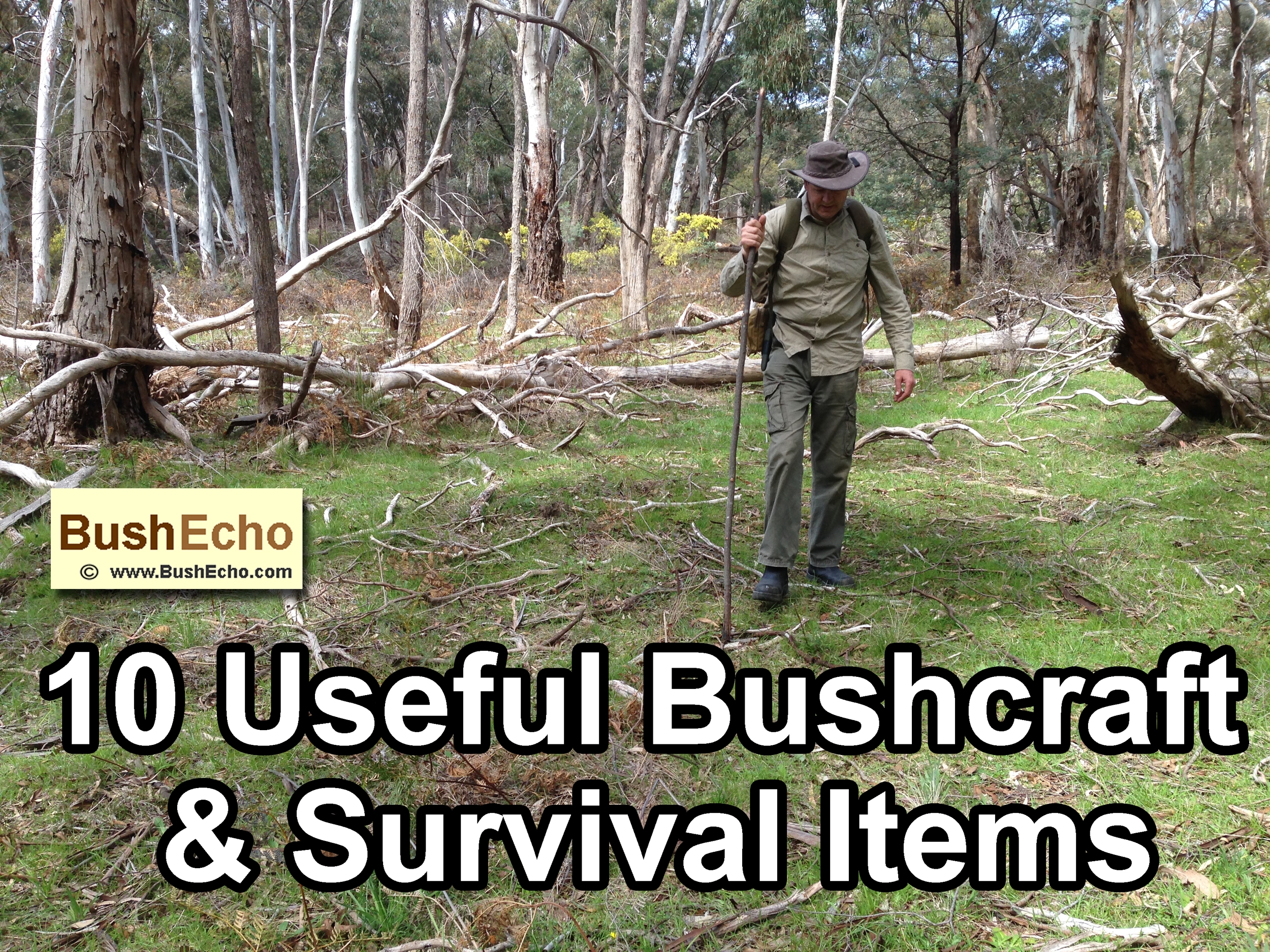The flint and steel is a great fire-lighting tool, however, it can have a learning curve. While the flint and steel isn’t quite as particular as friction fire, the process from spark to flame needs some steps and structure, otherwise it may not work.
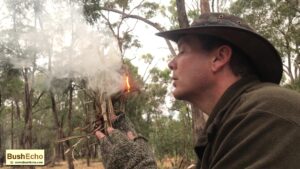
All the phases don’t have to be perfect. However, if any of these stages aren’t done reasonable well, fire will avoid us. Or take longer.
(I use the term “flint” mostly in the article, but that term can include quartz, chert, etc. The word bird’s nest, is interchangeable with tinder bundle. Which could arguably be, fine kindling. Char cloth can also be called charred cloth or charcoal cloth.)
To get a fire with the flint and steel, the step by step process crudely goes:
1. Create a spark.
2. Catch the spark in an optimal tinder material. (Char cloth, tinder fungus, charred material, etc.)
3. Transfer the ember / material to the birds nest. (Tinder bundle.)
4. Help the smoldering ember to transfer the heat to the bird’s nest, by oxygenating it into flame. (Blowing it, or waiving it about.)
Because there are a several stages, each step can go wrong. So it is important to trouble shoot the flint and steel to identify at what step we are having problems with it.
While I am no expert by any means on the flint and steel, here are a few tips to get from spark to flame. A lot of these issues are common problems with the flint and steel, and are missed in articles on, “How to start a fire with the flint and steel.”
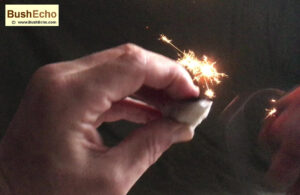
Here are seven mistakes with the flint and steel and how to correct them:
1. No sparks – Not sharp enough flint.
A sharp piece of flint is extremely important.
You can have a great steel striker, perfectly charred material and bone dry football size tinder bundle, but without a sharp flint, it is hard to get good consistent sparks.
A sharp flint edge, will help shave tiny particles of metal off the steel striker, creating a spark.
After a few strikes, the flint may become blunted. Find another edge or surface of the flint that is sharp.
Sometimes by simply turning the flint over and using the same edge (But upside down.) it can work, as you have a new sharp edge.
Too thin of an edge can break easily, but a sharp edge helps.
Don’t rely on one piece of flint or quartz, etc., collect several pieces to get the best one.
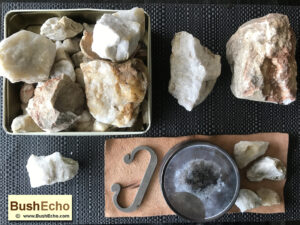
Knap some bigger rocks to get a nice sharp edge. Look after your eyes and wear safety glasses, as bits of sharp rock can go flying and can be dangerous. Gloves, proper clothing, should be worn.
If you are still having trouble with sparks and the edge of the rock is sharp, try some different batches of rock. Sometimes the rocks have different composites in them, such as the total quartz content may be low.
Other materials such as dirt, or sandstone might be mixed with the rock making it hard to get sparks.
2. No sparks – Incorrect technique.
If your flint is sharp, but still not getting any sparks from the flint and steel, make sure your technique is correct.
The technique of flicking the wrist in a nice arc, allows the flint to slice the steel off.
Don’t punch the steel into the flint, or go straight down. But use an arc motion with the wrist. You don’t have to use your whole arm.
The force used is a swift firm strike in the Goldilocks zone. That is not too weak, slow or too forceful, but just right.
Here are three techniques to hold and operate the flint and steel:
(1.) Hold the flint stationary. Strike with the steel with the flick of the wrist.
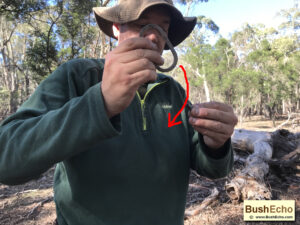
You can hold the flint in one hand stationary. The char cloth is place on top of the flint. With the other hand, hold the steel striker and flick it down in an arc on the flint. This should aim the sparks up and onto the char cloth.
Make sure the flint is angled up, exposing the sharp edge to the steel striker. The angle can range from flat, to roughly around 45 degrees, even up to nearly 90 degrees. The angle will depend on the shape, thickness of the rock edge, type of hardness and your preferred technique.
Learning how to strike the flint and hold the char cloth at the same time makes it more difficult. Practice first without the char cloth, until you are creating consistent sparks.
Flicking the wrist and not using the whole arm is extremely important in this technique.
(2.) Hold the steel stationary, strike with the flint.
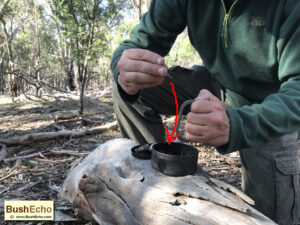
Hold the steel down stationary, just above a char tin. Hold the flint with the other hand and flick with the wrist in an arc on the steel. Be careful you don’t hit the char tin with the flint hand.
This will aim the sparks down into the tin and charred material.
There is no char cloth on top of the flint.
(3.) Sideways flint and steel method.
The third technique I occasionally use is, holding the flint and steel sideways. I haven’t seen this method done anywhere else, but it works for me.
The flint is held stationary with char cloth on it. The flint and steel hovers sideways just above the char tin and the flint struck like technique one, but sideways.
After watching slow motion video of the flint and steel with technique one, a lot of sparks will go upward (Ideally land on the char cloth.) however not all sparks go up, sometimes most of them will go up and a few go down. Other times more sparks will travel down.
So with the sideways method, it is a bit of a combination of the first two and you are hedging your bets on were the sparks will go.
Another benefit is that you don’t knock the char tin like in technique number two.
3. Sparks, but sub-par char cloth or tinder.
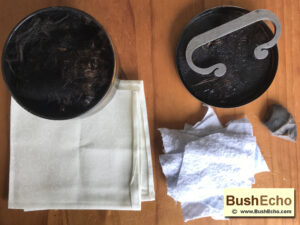
Check your char cloth and make sure it is 100 percent cotton and charred long enough. Some fabric might be fire retardant, or not pure cotton or linen.
Ensure natural materials like punkwood, is suitable and charred long enough.
If you are getting good sparks and they are falling on the charred material, but not creating an ember, try some different cloth, materials or natural material like: Lamp wick, denim jeans, cotton balls, cotton pads, jute twine, cattails, punkwood, bracket fungus’s, shredded barks, animal herbivore dung, etc.
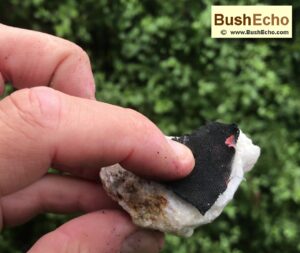
After charring it, test it with the flint and steel to see how it catches a spark. If it doesn’t hold a spark well, place it back into the tin and fire and char it again. Test again.
Is the charred material dry? In humid conditions the material can get damp.
Regarding charring materials, you don’t have to char in a tin. You can use a fire without the tin, however, the tin does make the whole process easier.
A hole should be in the tin, so you can see the gasses escaping. When the gasses have finished coming out of the hole, the char cloth should be ready. Depending on the type, moisture and quality of the material you might have to place it back in the fire again.
(Some tins with loose hinges will let the gasses escape through the hinge, the hole in the tin isn’t necessary. But it helps and lets the gasses escape, otherwise it can explode if the heat isn’t vented. A punched hole in the top of the lid just makes it easier.)
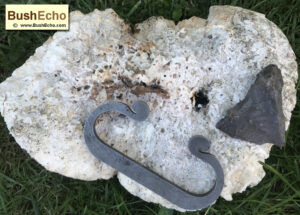 Above: The White Punk Fungus (Laetiporus portentosus.) doesn’t require charring, if burrowing beetles create fine enough dust for it to catch a spark.
Above: The White Punk Fungus (Laetiporus portentosus.) doesn’t require charring, if burrowing beetles create fine enough dust for it to catch a spark.
Gun cleaning patches (100 percent cotton.) work well. Either used ones with a bit of oil on them, or unused, then charred.
(A magnifying glass, Fresnel or frennel lens works on charred materials as well.)
4. Sparks and good char cloth, but can’t catch a spark.
If you are getting sparks but can’t land them on the char cloth, practice and see where the sparks are going.
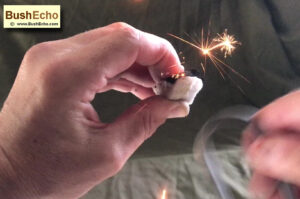
Increase your odds by using larger char cloth, bigger surface area. Or two or three pieces of char cloth. Also have your char tin underneath to catch any stray sparks.
Fold the char cloth over on your flint to increase the vertical surface area of the char cloth, to catch a spark as well.
If using the second technique, don’t be too far away from the tin. If the char tin is too far away, the sparks have to fall along way and may be out before they land on it. The closer the better, without pushing your material away when striking.
As well as charred material in the tin, place some on the lid as well close by to catch stray sparks.
Try the sideways technique with a larger piece of char cloth if you are still having issues. But practice technique first.
5. Tinder bundle not processed enough.
If you are getting sparks easy enough and the char cloth is catching a spark well, but you are having trouble creating a fire from there, make sure your tinder bundle is processed properly.
The birds nest or tinder bundle should be fine enough for the char cloth to transfer the heat and ember too. Some people suggest it should be fine like cotton wool balls.
Every time I have tried to take shortcuts with the birds nest, I have issues. Take the extra time and process the material. Tear, shred, rub and roll the material into a fine tinder bundle.
Also try mixing in some other materials into the bundle as some will go to flame quicker or easier than others.
For practice, mix some jute twine in the tinder bundle with other materials. If you have limited materials, try making the whole birds nest with jute twine.
6. Tinder bundle not dry.
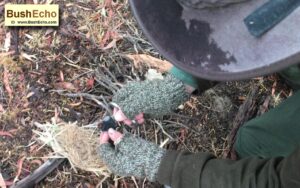
Another problem could be the tinder bundle is not dry enough. Wet or humid conditions can put a lot of moisture in the air, so check the tinder bundle is dry.
Collect the materials ideally from above the ground. Underneath dry branches, suspended materials caught between limb forks.
In wet conditions, a lot of times the rain may come in one direction. So the drier side of the trees, or in more protected areas are worth looking at.
If the materials collected are slightly damp, place materials like barks and grasses in your pockets to dry.
When you are finished processing the tinder bundle, don’t place it on the damp cold ground. Place it on something dry, off the ground.
(Remember to collect extra material for future fire-making. If the weather turns real bad, at least you have some dry materials handy.)
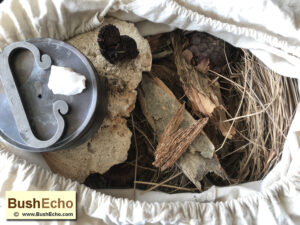
7. Tinder not bundle big enough.
Ensure the tinder bundle is big enough.
As a general rule it might be from softball size to football size. But, the size will depend on how type of materials, how dry it is and how finely it is processed down.
For hot conditions and optimal fine materials the bundle can be smaller.
If the weather is cold and wet, the tinder bundle needs to be bigger.
Other common problems.
When blowing it into flame, be careful your breath hasn’t got too much moisture in it by blowing directly on the char cloth, or too close to it. You can protect the char cloth or material by wrapping the birds nest more around it. Don’t smother it completely of oxygen though.
Use the wind for your advantage as well, or waive it about.
Make sure the charred material is in contact with the tinder bundle and the heat can be transferred directly to the bundle.
Summary – Flint and steel troubleshooting.
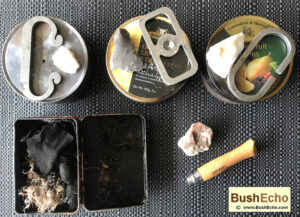
If you are having trouble with the flint and steel, revisit the steps and try and work out what stage you are getting bogged down at.
It takes practice and persistent, but will be worth it with more consistent sparks, flames and fires.
Affiliate Links – This article may contain some affiliate product and Amazon affiliate links. This comes at no additional cost to the reader, and helps to support the website. Thank you.
Copyright © by BushEcho. Content on this site cannot be copied and is protected by copyright law. Please contact the author/s for permission.
Disclaimer – This information is for educational purposes only. The author/s and website disclaim liability for any damage, mishap, or injury that may occur from engaging in any activities or ideas from this site.

